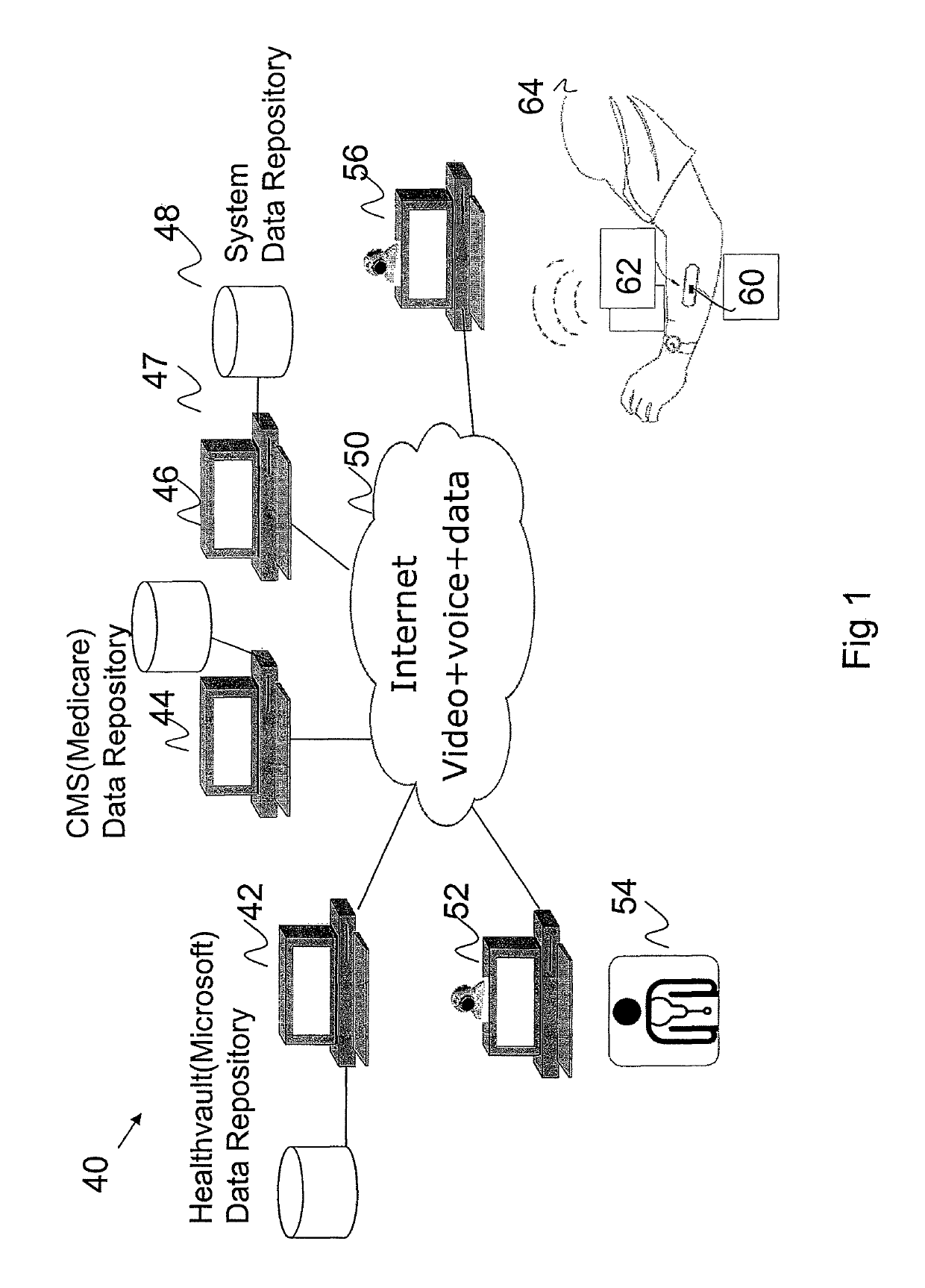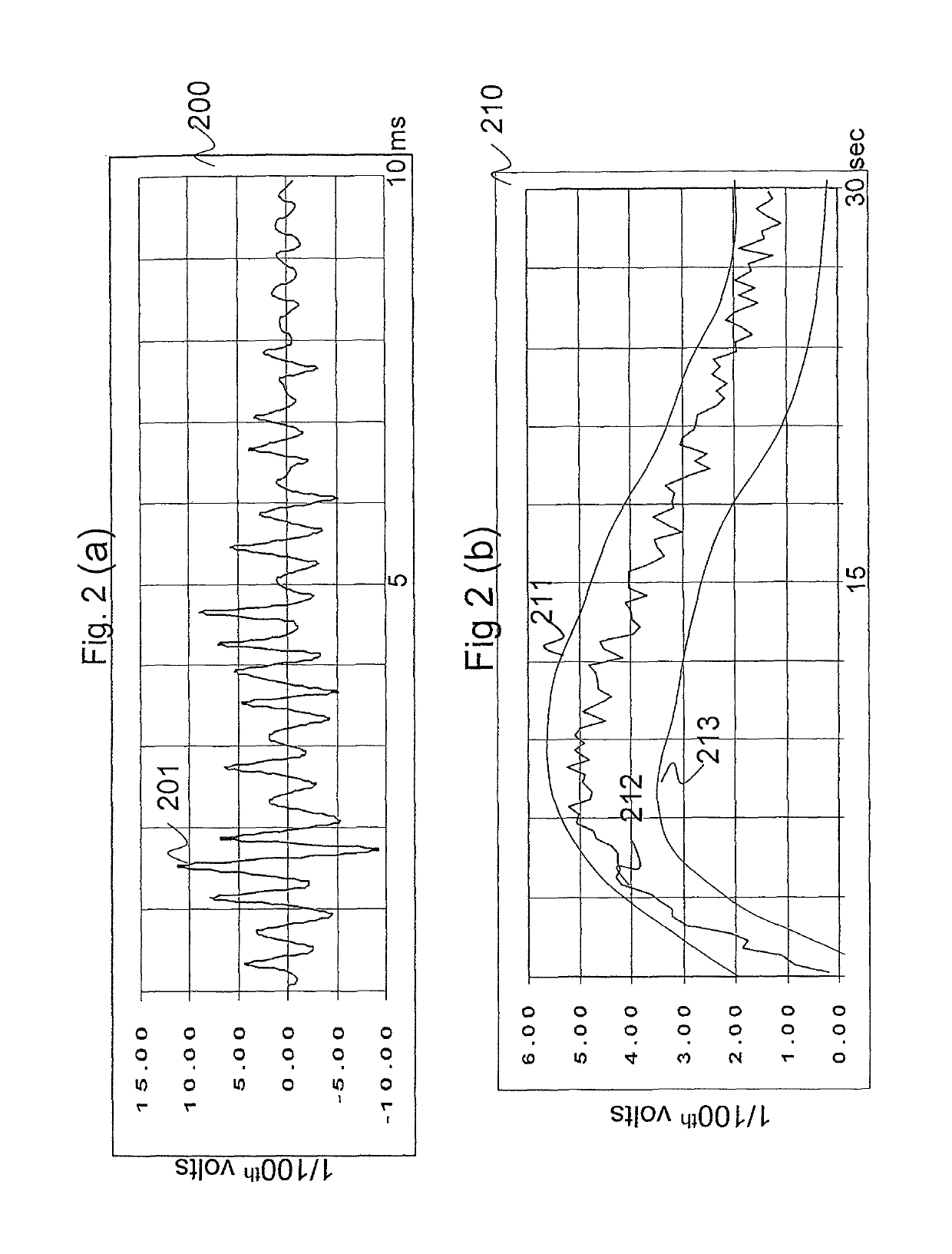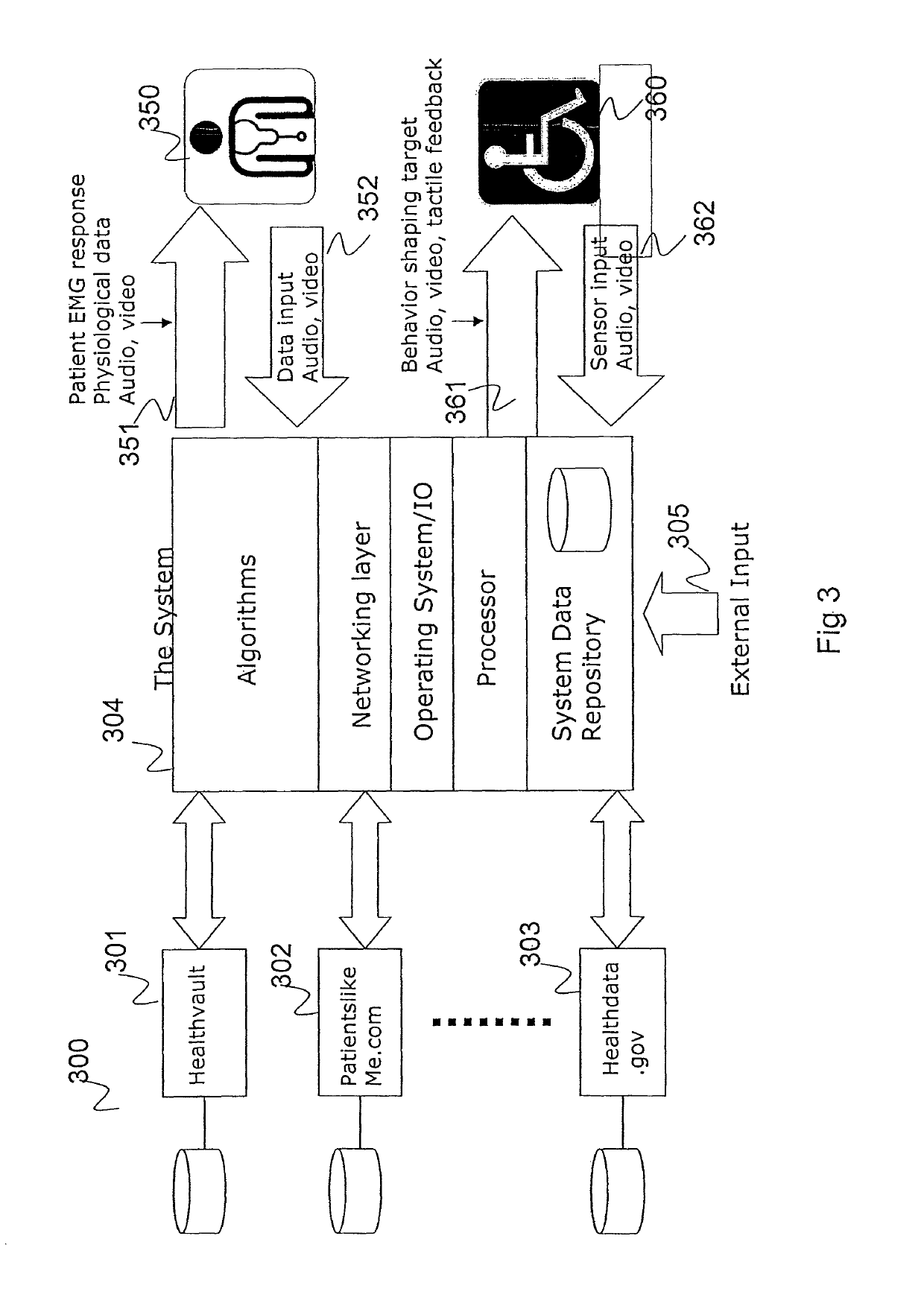Method for determining rehab protocol and behavior shaping target for rehabilitation of neuromuscular disorders
a neuromuscular disorder and behavior shaping technology, applied in the field of determining the rehab protocol and the behavior shaping target for neuromuscular disorders, can solve the problems of lack of support structure, high cost of devices, and not designed for patient ease of use, and achieve the effect of accelerating rehabilitation and strengthening strength
- Summary
- Abstract
- Description
- Claims
- Application Information
AI Technical Summary
Benefits of technology
Problems solved by technology
Method used
Image
Examples
embodiment 30
[0047]Sensors communicate with a Patient Computing Device, a representative embodiment 30 is shown in FIG. 8, which has its own processing module (not shown) having at least one processor (not shown), DSP module (not shown), and at least one data storage unit. The processor is adapted to execute software stored in the data storage unit, analyze patient data, display results of the analysis, amongst other things. Alternatively, it will apparent to those of ordinary skill in the art that Patient Computing Device 30 can act as a client with a bulk of the data processing and computation done remotely on a server connected to the internet. Patient Computing Device 30 supports communication through a variety of wireless interfaces such as Bluetooth, Zigbee, WiFi, infrared, and other propriety wireless transmission / receiver protocols. Patient Computing Device 30 also supports wireline networking interfaces such as Ethernet, data communication interfaces and ports such as USB 39a and 39b. A...
embodiment 900
[0069]Evidence based data influence selection of rehab protocol and treatment regimen. A representative embodiment 900, displaying efficacy 903 of rehab protocols 902 relative to patient condition 901 and patient population 904 is depicted in FIG. 10. Reference to clinical studies 905 is provided to act a reference for the healthcare professional. The value of this information presented in aforementioned format will be apparent those of skill in art.
[0070]These choices will afford the healthcare professional the ability to create a treatment approach that will most likely deliver desired outcome.
PUM
 Login to View More
Login to View More Abstract
Description
Claims
Application Information
 Login to View More
Login to View More - R&D
- Intellectual Property
- Life Sciences
- Materials
- Tech Scout
- Unparalleled Data Quality
- Higher Quality Content
- 60% Fewer Hallucinations
Browse by: Latest US Patents, China's latest patents, Technical Efficacy Thesaurus, Application Domain, Technology Topic, Popular Technical Reports.
© 2025 PatSnap. All rights reserved.Legal|Privacy policy|Modern Slavery Act Transparency Statement|Sitemap|About US| Contact US: help@patsnap.com



